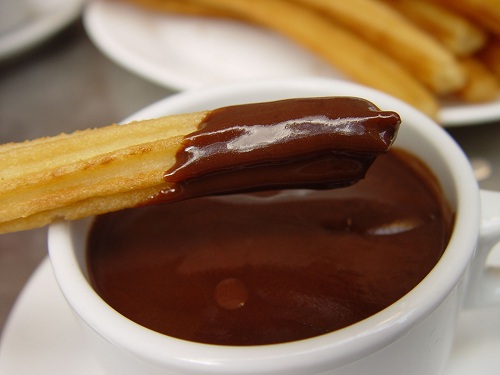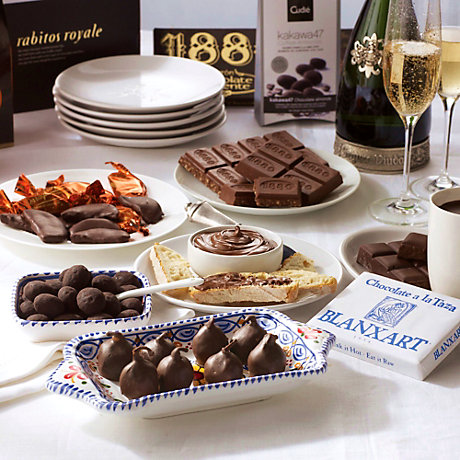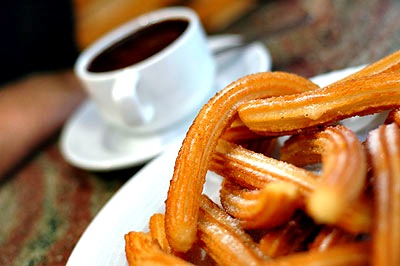Spanish Hot CHocolate
Chocolate a la taza
Spaniards like their hot chocolate thick, so they let it simmer on the stove, stirring it all the while, until it has reduced to the correct density. The also believe that it tastes best when they are enjoying it with family or friends at one of the many places that serves hot chocolate and churros for breakfast.
- Serves 4
Ingredients
- 4 1/2 cups whole milk
- 1 pound semisweet chocolate, coarsely chopped
- 1 tablespoon cornstarch
- 1/4 cup sugar
- 1/2 cup whipped cream (optional)
Preparation
In a large saucepan, bring 4 cups of the milk to a boil over high heat. As soon as it boils, remove the pan from the heat. Add the chocolate to the milk and let it melt, stirring it several times as it does.
While the chocolate is melting, combine the remaining 1/2 cup milk and the cornstarch in a small bowl and stir until the cornstarch dissolves.
Return to the saucepan to medium heat, bring the chocolate milk just to shy of a boil, and cook, whisking constantly, for about 30 minutes, or until the mixture has thickened and reduced slightly. Add the cornstarch mixture and sugar, decrease the heat to low, and cook, whisking constantly for 10 minutes longer, or until the chocolate has thickened to a good consistency. To test the chocolate, dip a spoon into it and then lift it out; the spoon should be thickly coated with the chocolate.
Remove from the heat and immediately divide evenly among 4 cups. Top each cup with a spoonful of whipped cream, if desired, and serve right away. Once the chocolate cools, it becomes to thick to serve. If this happens, add a little milk and reheat over low heat while stirring constantly.
You may be also interested in...
See also....
- Six classic chocolate treats
- For nibbling, spreading on toast and drinking
- Perfect gift for the chocolate lover
From chocolate brandy figs to praline coated almonds, here is an extraordinary Spanish chocolate experience! We happily put our sweet tooth to work so you can relax and luxuriate in each taste of Spain’s sublime cocoa. This collection offers six delectable chocolate experiences for you to enjoy.
Churros: Although churros are by no means exclusive to Madrid, they may have originated here. No open-air festival would be complete without its churrería stall, or at least a hawker wearing white cuffs and carrying a basket of freshly-fried fritters.
They are long thin strips of fluted dough fried to form loops. If thicker and straight, they are called porras, and if in the shape of a ring or hollow ball, buñuelos.





